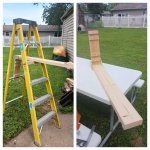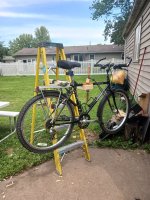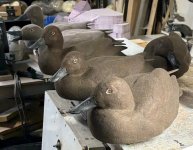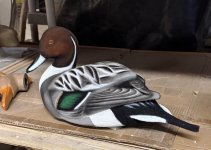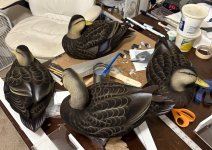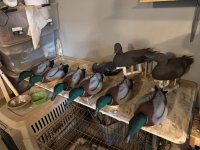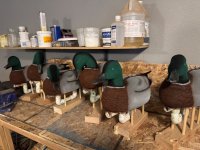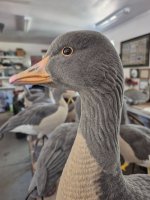The flocking process is labor intensive, but reasonably simple. I can't imagine that there is anyone who has flocked as many decoys as we have over the past 20 years, some years as many as 5000. There have been so many changes in process, upgrades in materials and process. I've tried it all. Lots of failures with various glues and found that nothing works better than gloss oil based enamels like rustoleum. I use ACE oil based enamel, but I suspect they get it from Rustoleum and just rebrand it. The ACE hardware paint is more consistent as far as thickness.
Primary things to having a good experience are having a good place to flock. You don't want to be outside because you will waste too much material. You need to have an area with some exhaust, but super aggressive airflow or you'll wast too much material. You just need enough airflow to pull the airborne fibers away from your face. I have a booth that is just a hair wider than my plastic tub I'm working from. I put another tub behind it, with the lid of the one I'm working from on top of it and hanging just over the edge to catch the flocking drift. It's a good way to recover most of your loose flocking.
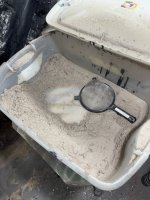
I've tried the puffer bottles, the air assist canisters, but I'm faster and more efficient with a simple kitchen sieve. The others take time to refill, the sieve does not. When I used the air assist flocking tool it wasted lots and lots of flocking.
I use a couple of brushes for painting the oil based enamels on, a 2 inch brush from walmart and 3/4 inch brushes from Amazon. It kind of depends on the material you are flocking over, but in general you put a liberal coat over the decoy in the appropriate color and sift flocking over it. The important tip at this point is to what I call "shaking the flocking ON" rather than shaking the flocking off. I'll bump and shake the decoy to settles the fibers into the paint rather than just letting them fall off. After doing that a few times I'll do a light spray from my compressor to blow off loose fibers. That's the first coat and that's where most folks stop. However you can make your flocking much tougher with a second coat, doing the same thing, painting over the first coat of flocking and adding another layer of flocking. I'll lightly blow off loose fibers after that step.
Then it's time to paint. There is no good way to paint flocking other than with an airbrush. I use the same oil based enamels through my airbrush with minimal thinning with mineral spirits.
Paint detail into a flocked surface is one of the most difficult things to do. However at the same time, painting over flocking is very forgiving for a beginning airbrush operator. I paint thousands of night lights every year and they are much more difficult to avoid runs and spits than painting over flocking.
Now why flocking. I said the same thing when someone gave me a kit. I thought "gimmick", till I used it and then used it some more and then used it exclusively and it can become absolutely ridiculous how much better ducks decoy to flocked decoys. Heck, if I used black jugs, I'd still flock them. There was a ton of resistance to flocking when we started out, but now it's pretty mainstream. I've even flocked some of my hollow wood decoys.


